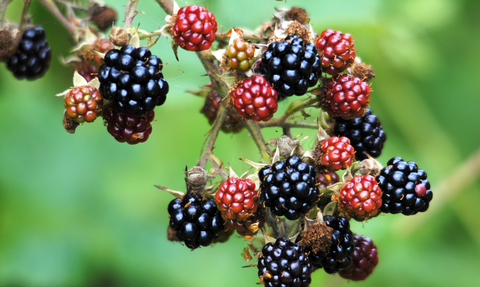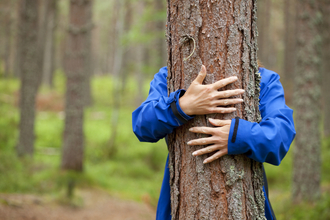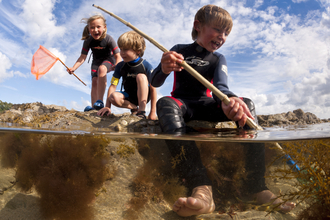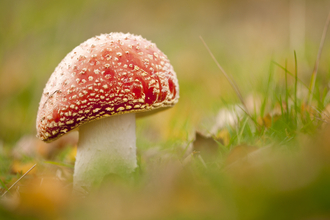
©Amy Lewis
Where to forage in Autumn
Foraging in Autumn
There’s nothing quite like a delicious meal of free foraged food. As summer turns to autumn, hedgerow fruits ripen, providing a valuable food source for many species. Probably the most familiar of our autumn fruits is the blackberry or bramble, but there’s plenty more to tempt the palate: elderberries and rosehips in the hedges, chestnuts and hazelnuts in the woods, and bilberries on the moors. Think wild fruit jelly and jam, roasted chestnuts, and of course what winter would be complete without a nip of sloe gin…
Always make sure you leave enough for the wildlife! Only pick where something is abundant, and only take what you need.
Find foraging spots
There are many good foraging spots throughout the country, likely closer than you think. Find a guided walk led by your local Wildlife Trust here. Here are some of our favourite spots around the country:
Alderney Wildlife Trust
Alderney Community Woodland (ACW) is the result of many thousand of years of human activity on the island. Historic features, built heritage and a variety of habitats and wildlife come together in its 17 hectare area to create a unique and diverse landscape. By forming the ACW 2% of Alderney's area has been planted with native broadleaf trees.
Longis Nature Reserve is a sweeping 105ha coastal reserve including high energy intertidal wetlands, species rich coastal grassland, freshwater wetlands and scrub.
Devon Wildlife Trust
Andrew’s Wood nature reserve sits in the heart of the beautiful South Hams countryside of South Devon. It has a track accessible from a car park lined with wild fruits and nuts (especially hazel) in autumn. The remainder of the reserve has many other foraging opportunities.
Herefordshire Wildlife Trust
Common Hill has damsons, perry pears and many other treats in the hedges (and of course plenty of fruit in the orchards that doesn’t get picked).
Warwickshire Wildlife Trust
Radway Meadows have midland hawthorn, so it's a good spot for haws and there are also crab apples. Loxley Church Meadow is fantastic for sloes.
What to look for
Tradition has it that brambles should only be picked before Michaelmas, after which they become unpalatable as the devil has spat on them... but it is most important that you make sure you know what you are doing. Many berries and nuts can make delicious food or drink, but others can be very poisonous, and often the two can look similar.
Did you know that there are more than 300 very closely related species of blackberry in Britain, which can vary greatly in size, taste, and juiciness? Join a Wildlife Trusts guided walk to learn more. And remember it’s not just you who might be hungry: make sure you leave plenty for the wildlife.
Not all nature reserves allow foraging, so always check before you pick.
If you can't get to these places
The great thing about autumn foraging is that you don’t need to visit a nature reserve, you can find autumn fruitfulness pretty much anywhere. Elderberries and brambles can be found in the most urban of parks or overgrown gardens, while hedgerows almost everywhere are abundant with hazelnuts, sloes (blackthorn) and dog rose.
More wildlife experiences
From seeing colourful wildflowers to spotting magnificent birds of prey, we can help you get closer to wildlife across the UK.







